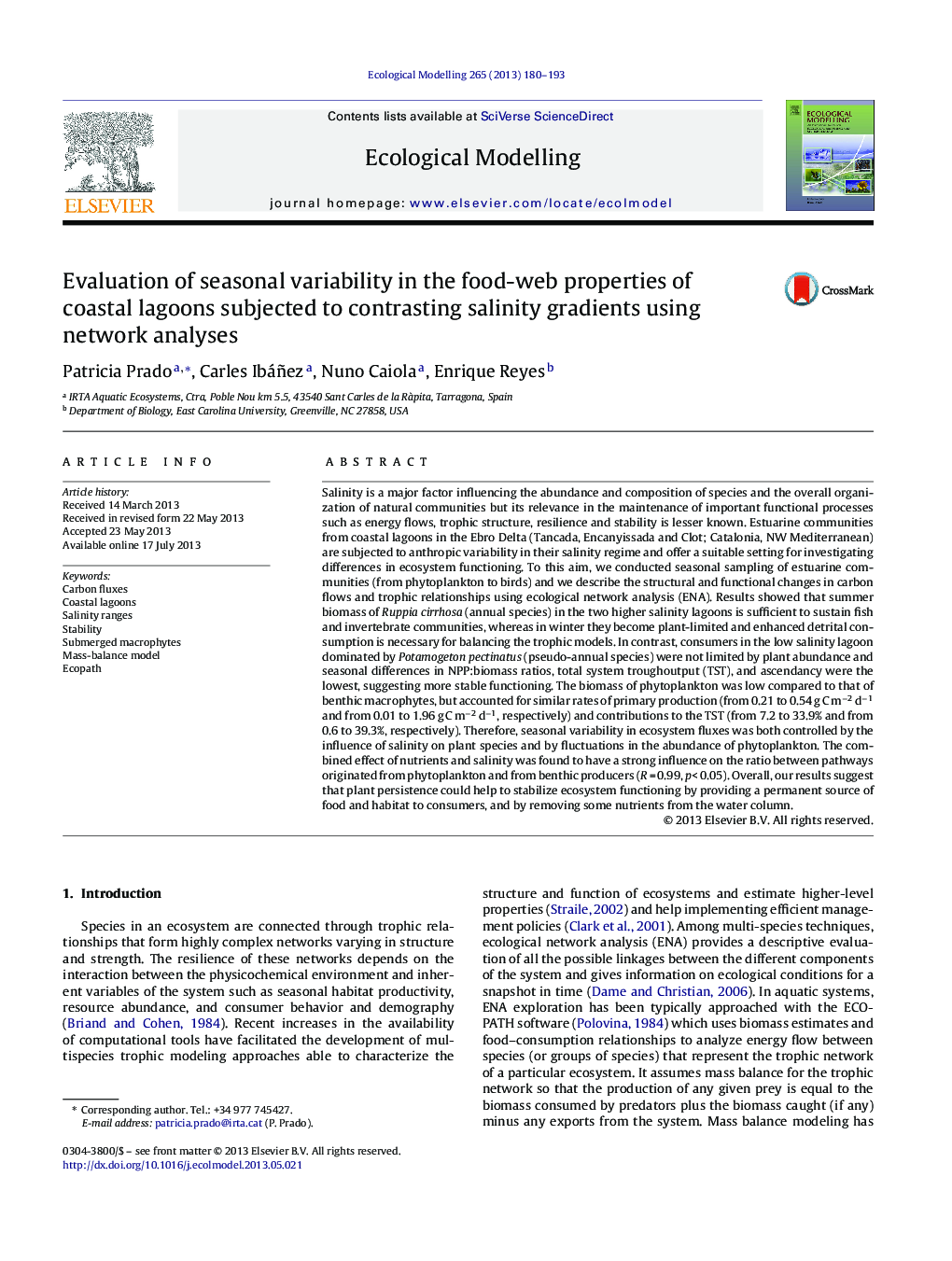| کد مقاله | کد نشریه | سال انتشار | مقاله انگلیسی | نسخه تمام متن |
|---|---|---|---|---|
| 6297089 | 1617481 | 2013 | 14 صفحه PDF | دانلود رایگان |
عنوان انگلیسی مقاله ISI
Evaluation of seasonal variability in the food-web properties of coastal lagoons subjected to contrasting salinity gradients using network analyses
ترجمه فارسی عنوان
ارزیابی تغییرات فصلی در خوشه های غذایی وب سواحل ساحلی که تحت تاثیر شکست شکافی قرار دارند، با استفاده از تحلیل شبکه
دانلود مقاله + سفارش ترجمه
دانلود مقاله ISI انگلیسی
رایگان برای ایرانیان
کلمات کلیدی
موضوعات مرتبط
علوم زیستی و بیوفناوری
علوم کشاورزی و بیولوژیک
بوم شناسی، تکامل، رفتار و سامانه شناسی
چکیده انگلیسی
Salinity is a major factor influencing the abundance and composition of species and the overall organization of natural communities but its relevance in the maintenance of important functional processes such as energy flows, trophic structure, resilience and stability is lesser known. Estuarine communities from coastal lagoons in the Ebro Delta (Tancada, Encanyissada and Clot; Catalonia, NW Mediterranean) are subjected to anthropic variability in their salinity regime and offer a suitable setting for investigating differences in ecosystem functioning. To this aim, we conducted seasonal sampling of estuarine communities (from phytoplankton to birds) and we describe the structural and functional changes in carbon flows and trophic relationships using ecological network analysis (ENA). Results showed that summer biomass of Ruppia cirrhosa (annual species) in the two higher salinity lagoons is sufficient to sustain fish and invertebrate communities, whereas in winter they become plant-limited and enhanced detrital consumption is necessary for balancing the trophic models. In contrast, consumers in the low salinity lagoon dominated by Potamogeton pectinatus (pseudo-annual species) were not limited by plant abundance and seasonal differences in NPP:biomass ratios, total system troughoutput (TST), and ascendancy were the lowest, suggesting more stable functioning. The biomass of phytoplankton was low compared to that of benthic macrophytes, but accounted for similar rates of primary production (from 0.21 to 0.54 g C mâ2 dâ1 and from 0.01 to 1.96 g C mâ2 dâ1, respectively) and contributions to the TST (from 7.2 to 33.9% and from 0.6 to 39.3%, respectively). Therefore, seasonal variability in ecosystem fluxes was both controlled by the influence of salinity on plant species and by fluctuations in the abundance of phytoplankton. The combined effect of nutrients and salinity was found to have a strong influence on the ratio between pathways originated from phytoplankton and from benthic producers (R = 0.99, p< 0.05). Overall, our results suggest that plant persistence could help to stabilize ecosystem functioning by providing a permanent source of food and habitat to consumers, and by removing some nutrients from the water column.
ناشر
Database: Elsevier - ScienceDirect (ساینس دایرکت)
Journal: Ecological Modelling - Volume 265, 10 September 2013, Pages 180-193
Journal: Ecological Modelling - Volume 265, 10 September 2013, Pages 180-193
نویسندگان
Patricia Prado, Carles Ibáñez, Nuno Caiola, Enrique Reyes,
